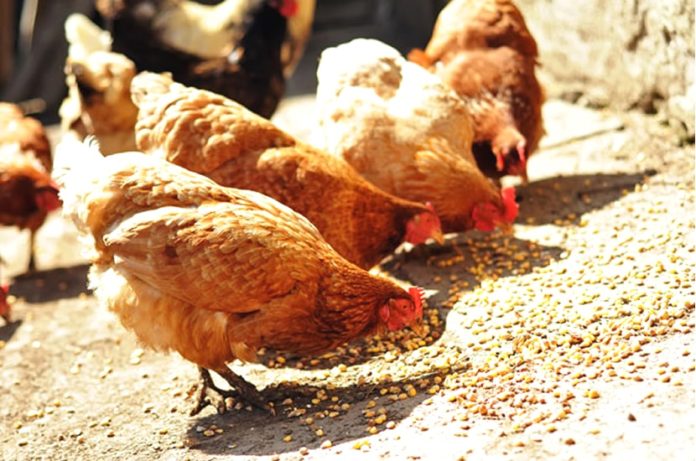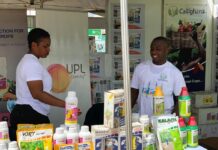There has been growing concern about the availability of maize in the country, a situation that affects our food security negatively in two folds: firstly, directly for human consumption and secondly as feed to poultry and pigs, which ultimately serve as food to humans.
Various associations like the Poultry Farmers Association have called on the government for some interventions including tac waving to enable them to import maize, soybean, and other feed ingredients to feed their livestock.
Due to the shortage, there are sharp increases in the prices of the commodities.
For example, 50-kilograms (kg) of maize, which was sold at Gh¢55.00, is now selling at Gh¢90/100. 50kg soya, which was Gh¢145, now pegged at Gh¢195.00. 50kg of concentrate was been sold at Gh¢245.00 but now it is been sold at Gh¢260.00. 50kg of the oyster shell, formerly sold for Gh¢23.00, is now selling for Gh¢33.00, and 25kg of wheat bran, which was Gh¢25.00, now costs Gh¢32.00 in Dormaa in the Bono Region not to talk of other parts of the country especially cities.
A bag of maize which was sold at GH¢150 3-4 months ago in Ejura Ashanti region, now sells for GH¢260, whiles the same which was GH¢150 in Kpando, Volts Region, now goes for GH¢300.
The situation is not different across the country: farmers in the Greater Accra Region are crying, so are those in the Volta Region and other regions.
CAUSES OF THE SHORTAGE;
There are two main causes responsible for the feed shortage and they are Climate Change and the Emergence of the Covid-19 pandemic.
CLIMATE CHANGE.
Climate change is a change in average conditions such as temperature and rainfall in a particular region over a long period of time. This change has really affected the seasonal planting seasons leading to food shortage as it was witnessed last year.
COVID-19 PANDEMICTH.
The emergence of the pandemic and its devastating effect took every nation by surprise. The safety protocol measures compelled most of the activities to be at a halt. Lockdowns affected food production, processing, and distribution. Most of the farmers were griped with fear which prevented them from production.
As Ghana is thinking of importing some items to augment their supply, countries like Argentina are suspending the exportation of food ingredients to prevent a domestic crisis.
Where Lies The Hope For The Import Dependent Countries Like Ghana?
The shortage of feed has both short term and long term effects on animal production, and ultimately our food security.
SHORT TERMS EFFECTS (LESS THAN 2 MONTHS).
The effects of feed shortage in the short term:
Reduce the prices of poultry and pigs. How? Because, there’s no feed, a lot of farmers will be forced to sell their birds and pigs quickly within a short time because they wouldn’t want to lose all their investment. This will bring prices down for a while.
Emaciation of Animals: people who wish to keep their animals risk keeping emaciated animals with compromised immune systems, and easily attacked by diseases, a situation that which violates Animal Right and Welfare.
LONG TERM EFFECTS (FROM 2-12 MONTHS).
Shortage of Poultry and Pig: after the initial sales of the poultry and pigs, there will be shortages.
Shortage of Eggs: eggs play an important role in our Nutrition. A lot of people substitute meat with eggs. A shortage in the supply of eggs is a threat to getting the required Nutrition, therefore, since there would be a shortage of poultry, so as eggs would be of shortage.
Arbitrarily increases in the prices of poultry, pigs, and their products. Whenever there are shortages, prices eventually increase.
Importation of poor quality products: in the absence of sufficient supply, people will be forced to import anything they would get. The quality of these cannot be guaranteed.
Food insecurity for Ghanaians. The average Ghanaian is not trained to store food; we buy in small quantities, just enough to feed us for a few days. Shortage of supply will make our situation more precarious.
A total collapse of the Poultry and Pig Industry: when the duration of the shortage prolongs, poultry and pig farmers would be forced to stop production indefinitely.
Loss of jobs and income: farmers and their employees will be out of jobs and their income levels would fall.
The possibility of social vices increasing is high. As people lose their jobs and income, some may be compelled to find ways and means to get earns meat which would lead to an increase in social vices like robbery, prostitution, and more.
THE WAY FORWARD.
Reducing the cost of Production in Agriculture is the sole aim of Practical Agricultural Economists and farmers alike.
In these times, we need to do Feed Ingredients Substitution; whatever is more expensive is avoided and we go for what’s less expensive “but can that work”
Our current situation calls for the use of more “Local ingredients” and “Wastes” rather than imported ones.
Products such as Cassava, Millet, Sorghum, Rice bran, etc. can replace such ones as maize, soybeans, and Wheat bran, without a significant change in the growth, Development, and Performance of the animals.
Practical Examples.
This is a good time to explore other feed ingredients such:
Moringa: soybean is 46% protein and Moringa is 45% protein; if soybean is expensive, it could be a substitute for Moringa.
Rice bran: Wheat bran contains 13% of protein which is equivalent to rice bran. Their digestible energy contents are also similar. Ghana does not produce wheat but rather rice, hence their brand. It is better to use the cheaper locally produced rice bran than the more expensive imported wheat bran.
Maize is 9% protein and 71% carbohydrates (mainly starch) while Cassava has 1% protein and 38% carbohydrates with a lot of fiber. We can harness cassava to replace maize or to reduce the quantity of the maize needed in the animal feed.
Leaves of Leucaena Gliricidia and Moringa are good sources of dietary fiber, minerals, and vitamins which could be used to substitute for soybean, vitamin premix, mineral supplements, and alfalfa.
Palm kernel cake is a good source of fiber and protein for animals. However, this is “a waste” in the palm kernel oil industry. It could be used in the pigs and poultry industry.
Sawdust: sawdust from the deep litter bedding system of keeping pigs eventually turns into feed for the pigs to reduce the cost of feeding. Why not add more of the IMO to the sawdust to speed up the conversion of the cellulose into simple sugars?
Corn cob: do you know corn cob could be used to feed animals including chickens, pigs, and ruminants? Grind them into appropriate sizes and incorporate them into the feed.
Agro-based by-products from the processing of roots and tubers, legumes, and cereals, as well as fruits and vegetables, could be used as feed. Examples: Brewer’s Spent Grains, Cassava, Yams, and Potato Peels, Banana & Plantain peels, etc. are all good alternatives to the conventional grain-based feed.
Banana and Plantain Stems: historically, banana and plantain stems have been left to rot on the farm which is the best source for both poultry and pig.
Irrigation: with irrigation, crops can be produced all year round, and shortages prevented.
The location will however determine the feed ingredients available to you for use.
A few things we need to know about whatever feed we produce are:
The protein content must be appropriate for the type and age of the animals.
The energy content must be taken care of.
Palatability: the feed must be readily accepted by the animals.
The feed should not be too expensive.
In conclusion, the situation we are facing now demands Innovation and creativity to overcome them. All hands must be on the deck.
Written by: Emmanuel Ankugah; Agricultural Economist and Agronomist.








